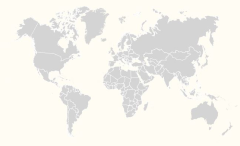John Flamsteed was the first Royal Astronomer, the first director of the Greenwich Observatory. The main works were the tables of the movement of the Moon, the catalog of positions about 3 thousand stars and the star atlas.
Background
John Flamsteed was born on August 16, 1646 in the village of Denby (English Denby) (Derbyshire, England). He was the only son of Stephen Flamsteed and his first wife Mary Spadman. He studied at a free school in the city of Derby, then in Derby School (English Derby School) at the church of St. Peter in the same city where his father was engaged in the business of selling malt. In the leadership of the school at that time there were, in the main, the Puritans.
Education
John attended the Free School in Derby until he was forced to leave because of illness.
After a brief period of rest and treatment, he entered Jesus College, Cambridge, in 1670 to study astronomy.
After earning his degree in 1674 and taking Holy Orders, Flamsteed was invited to London by Sir Jonas Moore, Governor of the Tower, who offered him a private observatory in Chelsea.
But events took a different course: it had been pointed out to King Charles II by his advisers, of whom Flamsteed was one, that if more accurate astronomical data were available to seamen, fewer ships and men would be lost.
Career
Flamsteed accurately calculated the solar eclipses of 1666 and 1668. He was responsible for several of the earliest recorded sightings of the planet Uranus, which he mistook for a star and catalogued as '34 Tauri'. The first of these was in December 1690, which remains the earliest known sighting of Uranus by an astronomer.
On 16 August 1680 Flamsteed catalogued a star, 3 Cassiopeiae, that later astronomers were unable to corroborate. Three hundred years later, the American astronomical historian William Ashworth suggested that what Flamsteed may have seen was the most recent supernova in the galaxy's history, an event which would leave as its remnant the strongest radio source outside of the solar system, known in the third Cambridge (3C) catalogue as 3C 461 and commonly called Cassiopeia A by astronomers. Because the position of "3 Cassiopeiae" does not precisely match that of Cassiopeia A, and because the expansion wave associated with the explosion has been worked backward to the year 1667 and not 1680, some historians feel that all Flamsteed may have done was incorrectly note the position of a star already known.
In 1681 Flamsteed proposed that the two great comets observed in November and December 1680 were not separate bodies, but rather a single comet travelling first towards the Sun and then away from it. Although Isaac Newton first disagreed with Flamsteed, he later came to agree with him and theorized that comets, like planets, moved around the sun in large, closed elliptical orbits. Flamsteed later learned that Newton had gained access to his observations and data through Edmund Halley, his former assistant with whom he previously had a cordial relationship.
As Astronomer Royal, Flamsteed spent some forty years observing and making meticulous records for his star catalogue, which would eventually triple the number of entries in Tycho Brahe's sky atlas. Unwilling to risk his reputation by releasing unverified data, he kept the incomplete records under seal at Greenwich. In 1712, Isaac Newton, then President of the Royal Society, and Edmund Halley again obtained Flamsteed's data and published a pirated star catalogue. Flamsteed managed to gather three hundred of the four hundred printings and burned them. "If Sir I. N. would be sensible of it, I have done both him and Dr. Halley a great kindness, " he wrote to his assistant Abraham Sharp.
In 1725 Flamsteed's own version of Historia Coelestis Britannica was published posthumously, edited by his wife, Margaret. This contained Flamsteed's observations, and included a catalogue of 2, 935 stars to much greater accuracy than any prior work. It was considered the first significant contribution of the Greenwich Observatory, and the numerical Flamsteed designations for stars that were added subsequently to a French edition are still in use. In 1729 his wife published his Atlas Coelestis, assisted by Joseph Crosthwait and Abraham Sharp, who were responsible for the technical side.
Views
In 1681, Flamsteed suggested that the two comets observed in November and December 1680 were actually two occurrences of the same comet (Great Comet of 1680), that for the first time approached the Sun, and in the second - away from him. Isaac Newton first argued about this with Flamsteed, but then agreed with him and proposed a theory that comets, as well as planets, revolve around the sun in definite orbits - but only a very elongated elliptic one. Soon angry Flamsteed learned that Newton with the help of Edmund Halley had access to records of his observations.
Working as a Royal Astronomer, John Flamsteed watched the stars for about forty years and carefully recorded them in his star catalog, which eventually began to contain three times more stars than the star Atlas Tycho Brahe.
Membership
He was a Member of the Royal Society of London since 1676.





